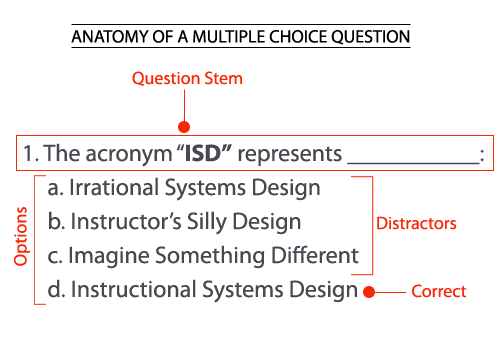The rules covered here make tests more accurate, so the questions are interpreted as intended and the answer options are clear and without hints. Just in case you’re not familiar with multiple choice terminology, it’s explained in the visual below.

Here are the ten rules. If you have any others, please add them through the Comments form below.
Rule #1: Test knowledge comprehension, not just recall
Multiple choice questions are criticized for testing the superficial recall of knowledge. You can go beyond this by asking learners to interpret facts, evaluate situations, explain cause and effect, make inferences, and predict results.
Rule #2: Use simple sentence structure and precise wording
Write test questions in a simple structure that is easy to understand. And try to be as accurate as possible in your word choices. Words can have many meanings depending on colloquial usage and context.
Rule #3: Place most of the words in the question stem
If you’re using a question stem, rather than an entire question, ensure that most of the words are in the stem. This way, the answer options can be short, making them less confusing and more legible.
Source: --The eLearing Coach
No comments:
Post a Comment